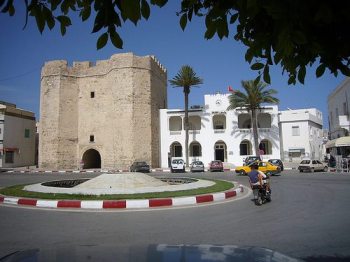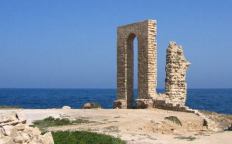Did you know that the Fatimid Caliphate was established in Tunisia?
The Fatimid Caliphs were Imams of the Shia Ismailis, who founded their dynasty in Tunisia. Named after the Prophet’s daughter, Fatima, the reign of the Fatimid Caliph-Imams, for almost two centuries, in North Africa and later in Egypt (973-1171), is often referred to as a ‘golden age’ in Ismaili history.

Imam al-Mahdi was proclaimed as caliph in Raqqada, Tunisia in 909. The Imam ruled his empire, which included Morocco, Algeria, Tunisia, Libya, and Sicily, from this inland city. In order to have better access to the Mediterranean and eastern lands, he founded the city of Mahdiyya (Mahdia) in 916 and transferred his capital there in 921. The fourteen-kilometre peninsula on which the city was built, was surrounded by massive fortifications with access from the land secured by two gateways. Imam al-Mahdi laid out a harbour, built a dock, a palace, and the Great Mosque. The oldest Fatimid architectural structures, the mosque and one of two city gates – the Sqifa al-Kahla – are still preserved in the modern-day small town.

The royal city of Mansuriyya, built by and named after the Fatimid Caliph-Imam al-Mansur, was the capital of the Fatimid Empire from 948 when the Imam settled there, to 973, when his son and successor Imam al-Muizz, transferred the seat of the state to the city of Cairo that he founded. Historical accounts indicate that it had a mosque called Al-Azhar, and the royal palace in the centre surrounded by shops and houses, all enclosed within a circular wall. The treasury and the mint were located on the southern side of the peninsula, close to the mosque. The last Fatimid coinage from this mint dates to the second half of the eleventh century.
Mansuriyya, with its palaces, the mosque, and gates served as a model for the city of Cairo. In subsequent times, Mansuriyya was abandoned and left to be used as a quarry. Today, nothing remains of this Fatimid capital except what modern archaeological excavations have unearthed of its original circular layout and other foundational structures.
Fatimid coins including those minted in Mansuriyya are in the Aga Khan Museum’s collection: http://www.akdn.org/museum/detail.asp?artifactid=1279
References: Farhad Daftary, A Short History of Ismailis, Edinburgh University Press, 1998
Heinz Halm, The Fatimids and their Traditions of Learning, I.B. Tauris & Co. Ltd, London, 1997
Article researched by Nimira Dewji. More from Did You Know Series.
Photos inspiration by Ismailimail supporter from Tunisia, Gasmi Raouf and http://www.radio-mahdia.net
ALL RELATED ISMAILIMAIL: https://ismailimail.wordpress.com/category/fatimids/